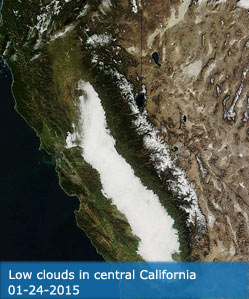Main Electronics Module (MEM)
Description
The Main Electronics Module (MEM) controls the format engine, the instrument, and the Scan Mirror’s rotation. Brief explanations of how the MEM accomplishes its tasks is provided below.
Technical Description
The format engine, which performs storage, re-ordering, and averaging functions in real time (990 words every 333µsec), operates under the control of a 12-MHz MIL-STD 1750A computer, or “format processor”. The format engine is fully reprogrammable in-flight, which is a critical capability since the timing of the format engine input will change if it is necessary to modify the FPA timing to correct vibrational misregistration launch effects.
MODIS specifications require that data representing a particular scene-pixel from all 36 bands must be contained within the same CCSDS packet, which requires processing by the format engine. Because the bands are separated on the Focal Plane Assemblies (FPAs) by up to 30 instantaneous fields of view (IFOVs), 30 km worth of in-scan data must be accumulated before data from the first kilometer can be fully formatted. Additionally, several bands are represented by a number of detector arrays whose outputs are averaged to reduce noise. Following processing by the format engine, the formatted data are sent to two 15-megabit memories. At any time one of these memories is reading out data at a constant rate while the other accepts data at a higher rate during the active portion of the scan. Thus, the two memories together act as a FIFO (first in, first out) data buffer to provide a constant instrument output data rate. In addition to controlling the format engine, the format processor generates CCSDS headings in real time, formats engineering telemetry information, and calculates individual detector offsets for each scan based on space-view data.
Instrument control and telemetry are provided by a second 12-MHz MIL-STD 1750A computer based on commands from the spacecraft, which are received via a MIL STD-1553 data link. A total of 160 bi-level and 16 serial command functions provide the ground with total versatility in instrument control (although most instrument operations are normally performed via stored command sequences activated by individual commands). The telemetry and command (T&C) processor functions include the control of power to select redundant hardware for all circuits except the T&C processor itself and the power supplies. Power Supply ON/OFF and T&C processor selection are performed by external spacecraft bi-level commands, which eliminates single-point failures in these critical functions.
Smooth and accurate rotation of the MODIS Scan Mirror is critical to both image fidelity and band-to-band registration. The mirror control system uses a 14-bit incremental optical encoder phase-locked to system timing. To provide smooth torque when transferring from one motor winding to another, the characteristics of the motor are stored in memory and the optimum power transfer characteristic is provided for each transition. The mirror control system allows synchronization of instrument data-taking operations to mirror rotation within 0.05 pixel, and even corrects for the few microradians of “wedge” nonparallelism in the two-sided Scan Mirror.



